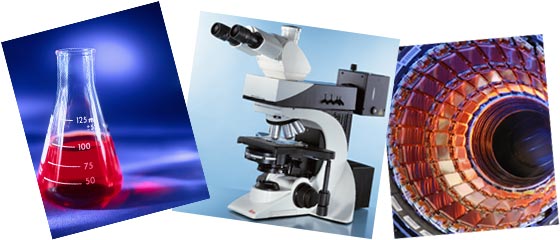 ![[Header]](../XuShared2/Line3.jpeg)

Add a Comment (Go Back to OJB's Blog Search Page) Ripples in Space-TimeEntry 1749, on 2015-11-10 at 12:23:43 (Rating 1, Science) Different people have different opinions on what are the most extreme and audacious activities our civilisation is involved in. Some think it is courageous and risky ventures in the business world, some think it is the production of great art, and some think it is impressive engineering projects.
I tend to admire our efforts at great scientific achievements most. In the past I have blogged about the Large Hadron Collider which I think is arguably our greatest scientific project ever (note that the engineering world shares substantially in this achievement) and this time I want to talk about another large scale project which also makes measurements with (literally) unbelievably exquisite precision.
The project is called LIGO, which stands for "Laser Interferometer Gravitational-wave Observatory". As the name suggests, this is an instrument (in fact 2, situated in Louisiana and Washington, USA) designed to measure gravity waves, and there are several other similar installations trying to do the same thing in other locations around the world.
The LIGO observatory consists of two tunnels in high vacuum, each 4 kilometers long and at right angles to each other. A laser is split and directed down the two arms and then reflected back with mirrors. As the two beams arrive back they interfere with each other and this can be used to measure the lengths of the two arms very precisely.
Why would they want to do this? Well, Einstein's Theory of Relativity predicts the existence of gravity waves which are "ripples" in space-time which travel out (at the speed of light) from events where mass changes configuration. The problem is that these waves are weak. Very weak. Even a massive catastrophic event like a star collapse only generates very small waves.
To detect these waves as they reach Earth it is necessary to measure how time and space is warped. Depending on the location of the source one arm of the tunnel at LIGO would be warped one way (it might get longer) and the other would be warped the opposite way (it would get shorter).
So that seems simple enough but the problem is how much the length changes. The effect which is trying to be measured is just one thousand trillionth of a meter over the 8000 meter journey of the laser. That's like measuring the distance around the Earth accurate to about one 10 billionth the width of a single hair.
Here are two other ways to visualise the tiny size of the distortion: a 1 km ring would deform no more than a one thousandth the size of an atomic nucleus; and it's like measuring the distance from the Earth to the Sun to the accuracy of the size of a hydrogen atom.
When I first read these numbers I thought I had misinterpreted them because it's almost impossible to believe that anything can be capable of such an astonishing feat of precision. But it's true according to several different sources.
Apart from simply how small the measurement is here are many factors which have to be considered. Even the tiny vibrations caused by traffic on distant roads is much greater than the distortion caused by gravity waves, for example. But this problem can be overcome. First, the two tunnels at right angles would warp in a particular way specific to the effects of gravity waves. Also, the two installations thousands of kilometers apart would both detect the gravity waves but would be affected differently by local noise.
So if one LIGO detected an event but the other didn't it would be assumed that it was due to local noise. But if both detected compatible events then a gravity wave is the best candidate for the cause. In addition, by timing when the event reached each observatory the direction the wave came from can be investigated.
For example, if the wave hit the Louisiana observatory before Washington then the event would have come from that direction. Of course, moving at the speed of light, the difference in time is small (a maximum of 10 milliseconds), but that's easy to measure compared with the other stuff being done there.
Finally I have to answer the obvious question: so what, who cares about gravity waves, and what practical purpose do they have? This is the question scientists hate, for two reasons: first, the pursuit of knowledge in itself is sufficient justification for this work; and second, discoveries which seem purely theoretical almost always have practical benefits later.
So the billions being spent on this should not be thought of as a waste of time and money, or as just a pet project for boffins, or as an expensive exercise in gaining theoretical and useless esoteric data. It should be seen as a way to learn more about the most basic attributes of the universe; of potentially gathering knowledge which can be used in future technology; and most importantly of all, as a way to do something which is just really cool!
 There are no comments for this entry. 
You can leave comments about this entry using this form. To add a comment: enter a name and email (both optional), type the number shown above, enter a comment, then click Add.
Note that you can leave the name blank if you want to remain anonymous.
Enter your email address to receive notifications of replies and updates to this entry.
The comment should appear immediately because the authorisation system is currently inactive.
![[Comments]](../XuShared/Comment1B.jpeg) ![[Preview]](../XuShared/Comment6B.jpeg) ![[Blog]](../XuShared/Up2B.jpeg)
|

![[Comments]](../XuShared/Comment1B.jpeg)
![[Preview]](../XuShared/Comment6B.jpeg)
![[Blog]](../XuShared/Up2B.jpeg)